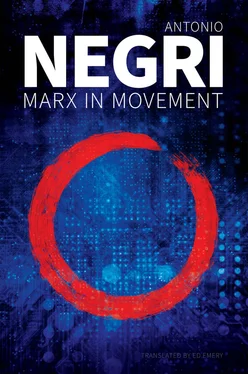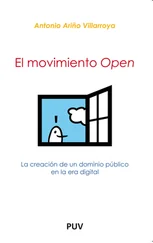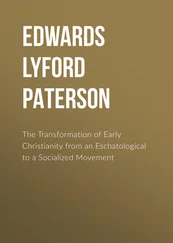The third and final article in Part I was written in the same period and deals with value theory. It opens to the study of the political practices of the new subjectivities, in other words to counterpower dynamics and to the development of constituent power [ potenza costituente ], practices that bring about the destruction of the relationship of equilibrium that bourgeois political economy prescribes for the extraction of profit. The very possibility of this equilibrium is radically contested here in the name of that theoretical discovery that the struggles of the 1960s and 1970s opened to: historical verification . Historical verification consists of the dispositif of the constituent cooperation of living labour, a process that had become central to the formation of the social worker. ‘From the mass worker to the social worker’ [ dall’operaio-massa all’operaio sociale ] can also be expressed as ‘from the self-valorization of the mass worker to the constituent cooperation of the social worker’. It is on this dispositif that the new revolutionary power of the cognitive proletariat would subsequently be based; and the cognitive proletariat, by recognizing its own productive autonomy, removes any dialectical link with the command of capital.
* * *
The title of Part IIis ‘Workers and Capital Today’. Under this title I gather some materials that I consider important for reading Marx in the current phase of the class struggle.
I begin with a reading of the ‘Fragment on Machines’. This is an invitation to accompany the prescient Marx, Marx the futurologist, in recognizing a figure of production and exploitation that we can all see to be present and topical today, after 150 years. The ‘Fragment’ shows Marx engaged in reading a new era in class struggle and open to a dystopian dimension that we have to transfer critically into our own reality. With this theoretical shift it is possible to arrive at the definition of a new proletarian subject – the cognitive worker – who attacks social exploitation in proportion to the development of the mode of production, and yet with renewed power. The Marxian method – as reconstructed in workerism – shows here that it has a dual ability: to destructure the opponent and to find the figures of the to-come [ a-venire ] not in the ruins of power but in the struggle’s constituent power [ potenza costituente ].
The second article translated in Part IIpresents the first original attempt at a cognitive definition of productive social subjectivity in the Marxian ontology of productive labour. This text, produced in the 1990s in collaboration with Carlo Vercellone, opens to the redefinition of labour power as an immaterial, biopolitical cognitive power , capable of appearing as power of cooperation – from time to time subjected but also resistant to, constituent of, and alternative to capital exploitation.
The next two articles in Part IIare papers delivered at conferences in recent years, one in Paris, the other in Berlin, and they conclude my research on the organic composition (technical and political) of capital and class today. In both, I redefine what it means to practise intervention and investigation from the workers’ point of view in today’s conditions. The contribution that these texts make to workerism consists, in my view, in highlighting the ontological basis of the new productive power of social cooperation and, at the same time, the manner in which the ‘social individual’ (through whom capital extracts surplus value) has the capability of becoming a political force today. Entirely monistic in Marx’s analysis, this nexus of economics and politics seems to constitute an enigma against which many theoretical lines have crashed, but in reality it is nothing but the most constant and determinate index of an immanentist, materialist journey that cannot be abandoned by revolutionaries.
* * *
Finally I include, as Part III, some materials that arose out of discussions with Mario Tronti and show that, contrary to what he claims, workerism cannot be read solely as his personal experience – a view that led him to assert that workerism came to an end in 1966, with the closure of the journal Classe operaia . I argue that workerism continues to exist well beyond that date and can be seen as a powerful instrument of revolutionary theory and practice that develops through new struggles and new inventions today. Is it worth making this claim? Maybe not, if it is true that, after 1966, Tronti spent the rest of his life crying over what he had done as a young man – as Daniel Bensaïd and Étienne Balibar have always maintained. It does not particularly concern me whether this was from nostalgia or from regret: the fate of a person who opened a future of research but then soon retired from the struggles remains pathetic whether he did it from nostalgia or from regret (and I don’t care which one it is), especially when he returned to doing political activity in the name of a worn-out tradition and in a party that was responsible for the social–democratic corruption and the present foundering of Italian and European political life. No, militant workerism, which is now a healthy trend among the younger generations, has never been able to live with that degradation. I repeat: the political defeat that workerism suffered in Italy at the end of the 1970s was rather the basis for an expansion of its influence on revolutionary culture worldwide. Workerism will never be a ‘post-’ phenomenon; it will always be key to understanding class struggle – or rather a new transition, from the multitude that lives within the crisis to a new working class that is rising up.
Antonio Negri, May 2020
1 *Translator’s note: For the purposes of this volume I use ‘workerism’ as a translation of operaismo in some chapters, although it has slightly negative overtones in English.
Part I From the Mass Worker to the Social Worker
1 Archaeology and Project *The Mass Worker and the Social Worker
1 Functions and limitations of the concept of the mass worker
In the wake of the 20th Congress of the Communist Party of the Soviet Union in 1956, the critique of Stalinism, which developed within the Italian labour movement above all, put into question the traditional conception of the trade union. This had become an area of key concern. In 1953, there had been a resounding defeat of the communist union at FIAT; in the years that followed, there were equally resounding defeats in line for the farm workers’ unions and the public sector unions (railway workers, postal workers etc.). The fading (or downright disappearance) of any immediate prospect of a seizure of power and a series of confusions at the ideological level meant that the trade unions were being undermined as the transmission belt of the system; both their organizational form and their ideological basis were thrown into crisis. But this crisis did not affect the radicality of the working class. There began to appear a mass form of behaviour that was spontaneous, multiform, violent, mobile and disorderly – but that, nonetheless, was able to compensate for the lack of trade union leadership in ways that were both original and powerful – and while the union leaderships stuck to a repetition of the old forms, the working class reacted in ways that were autonomous. The union would call strike action and the entire workforce would go in to work – but then, after a week, a month, maybe a year, that same working class would explode in spontaneous demonstrations. The farm workers of the south also began spontaneous struggles. However, they had been defeated in the movement to take over agricultural land; they had been sold out by the government’s agrarian reform, which condemned them to the poverty of having to work small holdings. As a result, the rural vanguards chose the path of large-scale emigration. This was a mass phenomenon – its causes and effects were complex, certainly, but its quality was political. Then things began to move: Milan in 1959, Genova in 1960, Turin in 1962, and Porto Marghera in 1963 – a series of struggles that pushed to the forefront of the political scene. This succession of labour struggles involved every major sector of industry and all the major urban concentrations. They were all more or less spontaneous mass events and revealed a degree of general circulation of modes of struggle that had not previously been experienced.
Читать дальше












